
- •Icao Level 3-4
- •L ook through the text and answer the question:
- •Read the text thoroughly. Find information to speak on:
- •Answer the following questions:
- •Answer the following questions given in the table below.
- •Take turns to ask and answer the same questions with your partner. Do you (both) have a lot in common?
- •Listen to the recording and copy Paul’s answers. Do you (all) have a lot in common?
- •Put a tick next to each description which best describes an atc.
- •Watch a video and answer the following questions.
- •Video # 7
- •D escribe a picture and give as many ideas as possible about the event. Justify your opinion. You have 30 seconds to think.
- •Round-table talk.
- •Match the words and phrases to their definitions.
- •Look through the text again and complete the table with key-words to speak about airport security measures and personnel according to the table.
- •Look through the text and choose the suitable heading for each paragraph.
- •Describe this picture and give as many details as possible about the common procedure before flight. Justify your opinion. You have 30 seconds to think.
- •Describe a picture and give as many ideas as possible about the airport security measures. Justify your opinion. You have 30 sec to think.
- •Look at the picture, say what things you can see in the picture and answer the question:
- •Read the text again and answer the following questions.
- •Divide all these things into three columns.
- •Match the words to their definitions.
- •Look at the picture. Label the pictures using the words from the box below.
- •Match the words to their definitions.
- •Complete each sentence with the correct form of the word in capitals. Make all necessary changes.
- •Look through the text and entitle each paragraph.
- •Underline the word with a different meaning.
- •Complete the sentences using the phrases from the box.
- •4. What is the most important information to be passed to the supervisor in case of squawking 7500?
- •5. Choose a partner. Use the prompts from the card to make a pilot-controller communication.
- •Write down the words with a similar meaning given in the box.
- •Complete the table using the dictionary.
- •Complete each sentence with the correct form of the word in capitals. Make all necessary changes.
- •Listen to the communication and mark the statements true or false.
- •R eport on the situation and give as many details as possible about the event.
- •Find and circle all the Weather words that are hidden in the grids. The words may be hidden in any direction.
- •Give equivalents to the following words:
- •What do these abbreviations stand for? What information do they include?
- •Match the words to their definitions:
- •Complete the following sentences using the words from the box.
- •Look through the text and pick out the items of a weather report.
- •Read the text again, look through the following statements and say if they are true or false:
- •Look through the text and answer the following question:
- •Why are wind speed and direction very important for flight?
- •Look at the table and check if you are right.
- •4. Watch a video and guess what we are going to discuss now.
- •Video # 23
- •L ook through the 3 characteristics of a rw and cross the odd out.
- •R ead the text and answer the following questions. You can use your own experience.
- •Describe a picture and give as many ideas as possible about the event. Justify your opinion. You have 30 seconds to think.
- •Do the lightning quiz, choosing the correct answers. Then check your answers with the teacher.
- •5. Describe the pictures and give as many ideas as possible about the event. Justify your opinion. You have 30 seconds to think.
- •Match the words from column a with the words and phrases with similar meaning from column b.
- •Look through the text and enumerate all the aircraft problems which can be caused by bird strikes.
- •R ead the text again and answer the following questions:
- •Listen to the four recordings and report on each one using the following questions as a plan:
- •Make a report on the event using information in the table above.
- •Look through the following information and complete the table below.
- •S peak about consequences of bird strikes, bird attractants and the most reliable methods of scaring birds away from the aerodrome. Use the information in the table above.
- •Describe a picture and give as many ideas as possible about the event. Justify your opinion. You have 30 seconds to think.
- •Fill in the correct prepositions.
- •Listen to the recording of the pilot-controller communication. Make notes and then report about aircraft callsign, problem, pilot’s intentions and controller’s actions.
- •Complete the radio- exchange with sentences from the box. Then listen and check your answers.
- •Do birds cause any problems where you work?
- •Round-table talk.
- •Look at the pictures and identify the type of aircraft and say what you know about it.
- •Listen to the following definitions of aircraft main parts and guess what they are.
- •Listen and check your answers.
- •Match the words in a to the words with the similar meaning in b.
- •Match the words in a to the words in b to make collocations. Different variants are possible.
- •Fill in the gaps with the words from the boxes. Check new words with your teacher or in a dictionary.
- •Look through each part of the text and say what it is about. Entitle each paragraph.
- •Discuss with a partner if the following statements are true or false. If necessary justify your opinion.
- •Match the words in column a to the words with the similar meaning in b.
- •Match the words in a to their definitions in b.
- •Listen to the recording about technical problems that might happen to an aircraft and check your answers.
- •Make a list of technical problems that might happen to an aircraft during the flight.
- •Look through the text and choose a suitable heading for each paragraph from the list below. There is one extra heading which you do not need to use.
- •Video # 33
- •L ook through the text and think of a title. Then read the text and answer the questions.
- •Match the words in column a to their definitions in column b.
- •Have you ever heard about aviation event involving fuel problem?
- •Look through the list of technical problems (Ex. 5 page 114) and check if all problems are mentioned. Then say what your actions might be in case of each technical problem on board the plane.
- •Match the words and phrases in column a to their definitions in column b.
- •Video # 37
- •Speak on the case using the words and phrases given in exercise 5.
- •Describe a picture and give as many ideas as possible about the event. Justify your opinion. You have 30 seconds to think.
- •Match the words in a to their definitions in b.
- •Listen to the report about the crash of Armavia Airbus a320-21.
- •Speak on the influence of human factor in that crash.
- •Match the words to their definitions.
- •Match the words to the words with the similar meaning.
- •Match the words that go together.
- •W atch a video and answer the following questions:
- •Video # 41
- •Elicit the information from the table and speak on flight safety and factors influencing it.
- •Match the words and phrases in column a to the words with the similar meaning in b.
- •Match the words that go together. You can write them into central column.
- •Look at the list of possible reasons for the aviation event. Watch a video and put them into correct order.
- •Video # 42
- •Report on the situation using the following words and phrases:
- •Describe a picture and give as many ideas as possible about the events. Justify your opinion. You have 30 seconds to think.
- •Round-talk table.
- •Tapescript.
Answer the following questions:
What foreign airlines fly through your zone?
What foreign pilots do you prefer to work with? Why?
What foreign pilots do you understand with difficulties?
What foreign airlines did you fly?

 What
foreign airlines would you like to fly?
What
foreign airlines would you like to fly?
What foreign airlines would you never fly?


VIDEO # 4
|
Warm up.
|
|
|
|
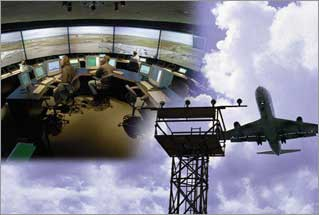
Answer the following questions given in the table below.
Take turns to ask and answer the same questions with your partner. Do you (both) have a lot in common?
Listen to the recording and copy Paul’s answers. Do you (all) have a lot in common?
![]()
What controller are you? |
you |
your partner |
Paul |
|
|
|
|
|
|
|
|
|
|
|
|
|
|
|
|
|
|
|
|
|
|
|
|
|
|
|
|
|
|
|
|
|
|
|
|
|
|
|
|
|
|
|
|
|
|
|
|
|
1.
2.
The objectives of ATC are as follows:
|
Air traffic control services also provide flight information services, alerting services and, depending on the aviation authority of individual States, Search and Rescue services.
3.
|
4.
A
5.
|
Although local languages are sometimes used in ATC communications, the language of aviation worldwide is English. Controllers dealing with foreign crews are supposed to show a certain minimum level (Operational) of competency with the language in accordance with ICAO requirements. Communication is a vital part of the job: controllers are trained to focus precisely on the words pilots and other controllers say, because a single misunderstanding about a flight level or a runway number, for example, can result in tragedy.
6.
Civilian Air Traffic Controllers’ licensing is standardized by international agreement through ICAO. A lot of countries have Air Traffic Control schools, colleges or Academies. They train student controllers from walking in off the street to the standards required to hold an Air Traffic Control licence, which will contain one or more ratings. ICAO defines five such ratings: Area (procedural), Area Radar, Approach (procedural), Approach Radar and Aerodrome. A learning process is extensive because air traffic controllers require knowledge of the following: meteorology, geography, navigation and navigation aids, maps and charts, operational procedures. They learn very precise definitions, rules and regulations.
|
|||||
Whenever an air traffic controller starts his \her career, or is posted to a new unit or starts working for a new sector within a particular unit, he or she must undergo a period of training regarding the procedures specific to that particular unit or sector. The most of this training is done in a live position controlling real aircraft and is termed On-the-Job Training (OJT), with a fully qualified and trained mentor or On-the-Job Training Instructor who are ready to take over in a second if it becomes necessary. The length of this phase of training varies from a matter of months to many years, depending on the complexity of the sector. Only when a person has gone through all these training stages, he will be allowed to control on his own. Training is ongoing not only because of knowledge required in ever-changing working locations, but also because of ever-changing equipment and continual updates to rules and regulations.
7.
|
There are indicators of primary and secondary radars. What is more, each working place is equipped with ADF. There is a meteorological screen available overhead left or right of the working place. It shows current weather for the airport. All controllers sit at special desks with built-in radar screens to observe traffic and to get all necessary information about aircraft. Controllers also draw diagrams to keep traffic information under control and to predict dangerous situations in case of any electrical failure. In addition, there are touch screens to coordinate work with pilots, the adjacent areas, neighbouring ATC units, militaries and other services. Controllers have two-way communication and use a microphone to contact pilots and to give instructions to them.
8.
|
|||||
It is common to work on a position for 1-2 hours and then take a 15-30 minute break.
Nearly
always air traffic controllers work indoors in control centers
and at radar terminals. Occasionally they work outside when
observing aircraft from the ground. Controllers can retire at the
age of 50 with 20 years active service or at any age after 25
years active service. |
9.
T |
|||||
![]()
e.g. ● An air traffic controller has to be accurate in order to avoid errors in his job. ● An air traffic controller should be careful not to make mistakes in his job. |
efficient
/ hard-working / quick-thinking / imaginative /
clear-thinking / courageous / fit / persuasive / polite /
fair / helpful / careful / friendly / patient / experienced /
determined / intelligent / responsible / accurate / |
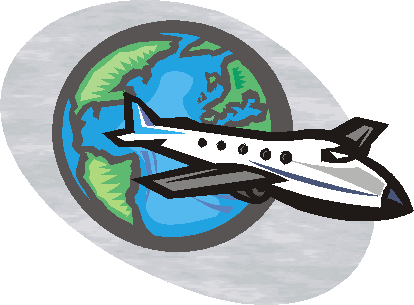

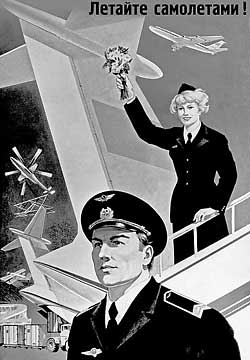 hey’re
responsible for avoiding conflicting traffic, terrain or
obstacles.
hey’re
responsible for avoiding conflicting traffic, terrain or
obstacles.

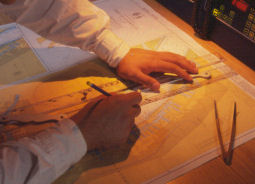
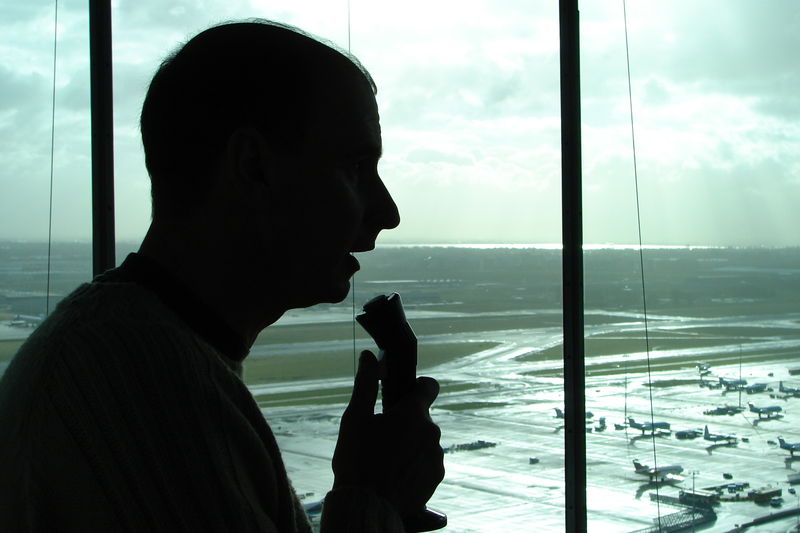
 lmost
universally, trainee controllers begin to work in their twenties,
and retire in the fifties. Strict physical and psychological
tests and excellent vision, hearing, speaking skills are a
requirement, and controllers must take precautions to remain
healthy and avoid certain medications that are banned for
controllers. As controllers have a large responsibility while on
duty, the ATC profession is often regarded as one of the most
difficult jobs today, and can be often stressful.
lmost
universally, trainee controllers begin to work in their twenties,
and retire in the fifties. Strict physical and psychological
tests and excellent vision, hearing, speaking skills are a
requirement, and controllers must take precautions to remain
healthy and avoid certain medications that are banned for
controllers. As controllers have a large responsibility while on
duty, the ATC profession is often regarded as one of the most
difficult jobs today, and can be often stressful.

 he
20th
of October is the World’s Air Traffic Controllers’ Day. It
is a day when many air traffic control officers world-wide
celebrate their own day and publicize their profession. This day
has been celebrated every year since 1961.
he
20th
of October is the World’s Air Traffic Controllers’ Day. It
is a day when many air traffic control officers world-wide
celebrate their own day and publicize their profession. This day
has been celebrated every year since 1961.